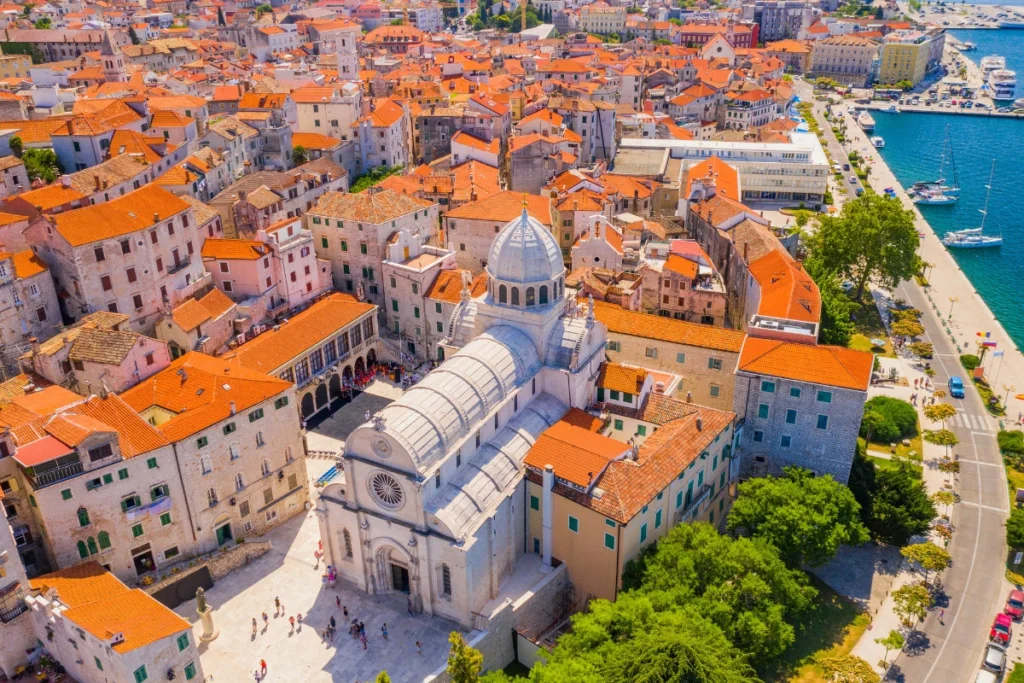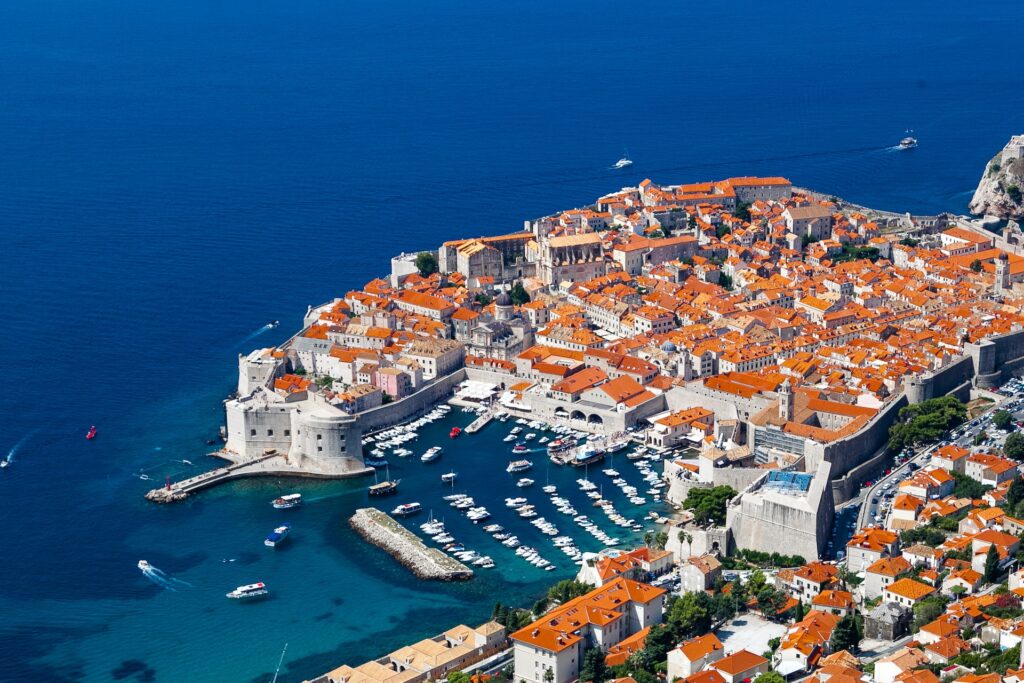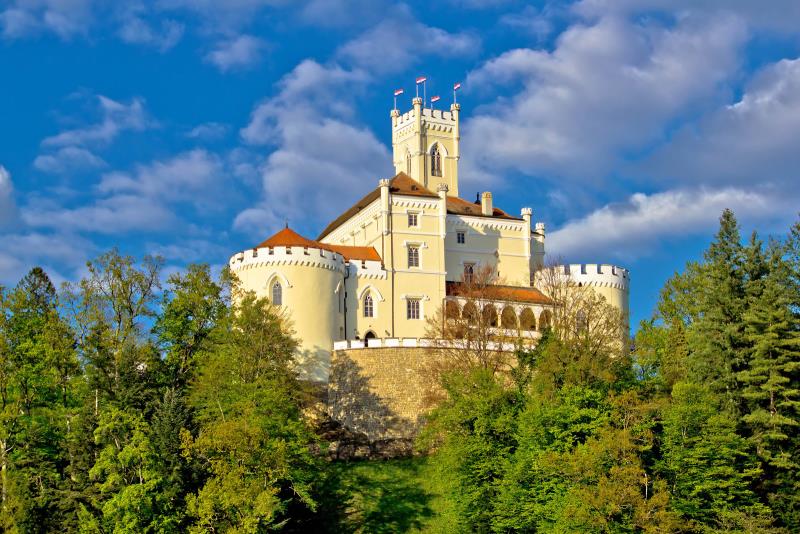Located on the Adriatic coast and enduring nearly a millennium of harsh temperatures, wars, and natural disasters, Šibenik remains as vibrant as ever. The city’s resilience and the fact that it’s built entirely of stone have contributed to its survival. As the only city on the Croatian coast built by Croats, Šibenik stands out as a unique destination for visitors. The third-largest city in Dalmatia, Šibenik is filled with incredible historical sites, beautiful seaside locations, and quaint alleys and squares that are typical of a medieval coastal city in Croatia.
In this article, we’ll explore the best things to do in Šibenik, including exploring stone streets and quaint squares, visiting the City Hall and the Cathedral of St. James, and experiencing Krka National Park and the four fortresses in the city. We’ll also provide some tips on exploring Šibenik’s localities and islands and discuss what makes this city unique.
Things to Do in Šibenik

City Hall Located in the heart of the city on the medieval Square, the City Hall of Šibenik is a striking Renaissance building constructed between 1533 and 1546. Although it was leveled during an air raid in 1943, it was meticulously rebuilt and now features a beautiful façade made up of columns and arches, a balustrade, and a balcony. The ground floor houses a wonderful local restaurant, which provides an extraordinary view of the Cathedral of St. James.
Krka National Park Although not technically located in Šibenik, Krka National Park lies only a few kilometers from the city center and is home to a section of the Krka River and the woods that occupy its banks. The park boasts a large number of waterfalls and cascades, including the spectacular Skradinski Buk. Visitors can swim in the natural pond underneath the waterfall, a unique experience that is not allowed in Plitvice Lakes National Park. The Lozovac entrance is the recommended entrance, as it is the closest to Skradinski Buk.
Stone Streets and Quaint Squares The historic city center of Šibenik comprises a few different areas, including Grad, Dolac, and Gorica. The entire area is car-free, allowing visitors to explore at their leisure. The area is chock-full of historic sites, ranging from ancient churches to palaces and mansions to townhouses, all constructed with stone. A maze of paved and cobbled streets connects all these attractions, sometimes passing underneath a beautiful arch or even through a tunnel.
Four Fortresses Šibenik’s strategic position in the Adriatic Sea made it a desirable city for the larger Mediterranean powers. The city rulers anticipated this and erected several mighty fortresses, built fortified city walls, and constructed commanding towers. The four fortresses in the city are the Fortresses of St. Nicholas, St. John, and St. Michael, and the Fortress Šubićevac, all of which were built between the 15th and 17th centuries. The Fortress of St. Michael houses a concert and theater venue at its top, making it one of the most scenic places to attend a performance in Croatia.
Cathedral of St. James The Cathedral of St. James is the number one attraction in Šibenik. Built entirely from stone in the 15th and 16th centuries, it is one of the most significant monumental cathedrals in Europe. It is the only European building whose interior shape corresponds entirely with its exterior features and the only cathedral in all of Europe that has been constructed with only stone.
What Makes Šibenik Unique
The Šibenik region offers a wealth of natural wonders, beautiful beaches, and hundreds of islands, providing many things to do. The area shares some of its natural landscapes with neighboring Zadar and Split counties, but it also has unique features that set it apart from its Dalmatian counterparts. These include:
- Krka and Kornati National Parks
- Lake Vrana Nature Park
- Dinara mountain peak, Croatia’s highest mountain
- Rivers Krka and Cetina and a section of the Zrmanja River
- UNESCO World Heritage site St. James Cathedral (Sv Jakov)
- UNESCO World Heritage list tentative nominee, the vineyards of Primošten with their indigenous Babić grape varietal
- Natural wonders, including the Cetina spring, the source of the Cetina River
- Monasteries, churches, and museums
- Historical and archeological sites
- Folklore, cultural events, and festivals
The Šibenik region is home to 14 fortifications and fortresses, including the medieval Knin fortress, historic home to Croatian kings and nobility, and the Byzantium fortress on the Kornati islands.
Explore Šibenik’s Localities and Islands
There is an abundance of things to see in Šibenik outside the old town, and it has many great places to stay, making it an excellent place to spend a few days. The Šibenik-Knin region offers various destinations with beaches, islands, cafe bars, restaurants, festivals, and events.
About 20 historic towns dot the coast, including Pirovac, Tribunj, Vodice, Brodarica, Primošten, and Rogoznica. Additionally, the three largest inland towns in the Dalmatian hinterland are Skradin, Drniš, and Knin.
Many islands, many close to the mainland, make Šibenik an ideal place for sailing. Six islands are inhabited, car-free (suitable for bike riding), and accessible by ferry, except Murter, which is connected to the mainland via a moveable bridge. The islands are:
- Murter, which has four towns (historic settlements): Tisno, Jezera, Betina, and Murter (gateway to the Kornati National Park)
- Prvić, which has two settlements: Šepurine and Luka
- Zlarin, known for its red Adriatic coral harvested by locals
- Krapanj, home to an old monastery and famed for natural sea sponges harvested by free divers
- Kaprije, the Croatian word for caper, a sailing paradise
- Žirje, the Croatian word for acorn, the furthest island from Šibenik’s coastline, with bays and inlets ideal for sailing
How to Get to Šibenik
Šibenik is perfectly central, making it easy to get to other destinations in the area. The city has a central bus station, well connected to other bus ports around the country. Buses are easy to get around on if you don’t have a car. From Šibenik, Skradin and the entrance to Krka National Park’s main waterfalls (Skradinski Buk) are half an hour away, inland by car. Via the A1 (also called the E65):
- Split and its main ferry port, with access to all the southern islands, is an hour’s drive south
- Zadar is under an hour north
- Zagreb is 3.5 hours north (east)
Where to Stay in Šibenik
Šibenik has a range of accommodation options for all budgets, from hostels to luxury hotels. Here are a few recommendations to get you started:
- Heritage Hotel Life Palace – Located in the heart of the city, this luxurious hotel offers rooms with contemporary decor and modern amenities, as well as a rooftop terrace with panoramic views of the city.
- Hotel Bellevue Šibenik – This four-star hotel offers comfortable rooms with sea views and a great location just a short walk from the old town.
- Hostel Splendido – For budget travelers, this hostel offers affordable dorm rooms and private rooms with a shared kitchen and lounge area.
- Apartment Goldy – This modern apartment is located in the heart of the city and offers a spacious living area, fully equipped kitchen, and balcony with city views.
- Villa Rosa – This guesthouse is located in a quiet residential area just a short walk from the city center and offers comfortable rooms with sea views and a shared terrace.
No matter where you choose to stay, Šibenik is sure to offer an unforgettable experience with its unique blend of history, culture, and natural beauty.
You might also like
Why You Should Visit Croatia in Winter: Best Things to Do
Discover the Best of Cres Island, Croatia





walgreen generic allergy pills allergy pills without antihistamine most recommended allergy medication